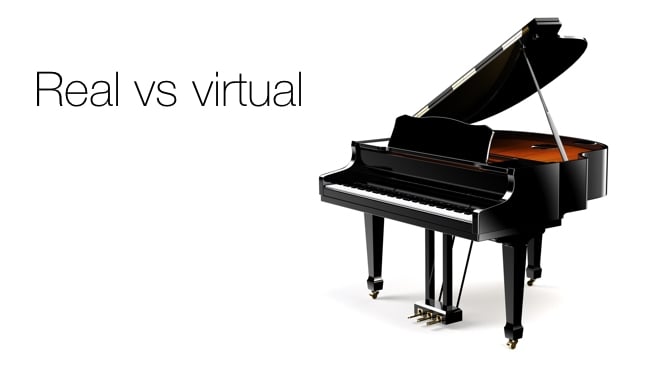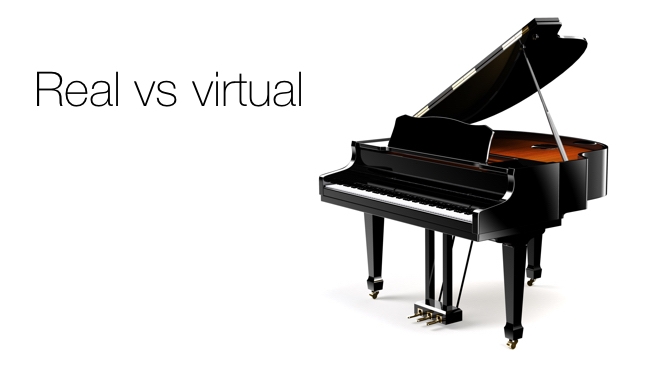
 Piano graphic by www.shutterstock.com
Piano graphic by www.shutterstock.com
Here's an example of a virtual piano, the Pianotek 5, which is a very faithful reporduction of the genuine article.
Very recently we looked at the technology involved in making a virtual piano.
What we mean by this is not just a digitally sampled piano, but one which generates authentic piano sounds from a digital model of one, just as you can make a digital model of a dinosaur.
The great advantage of using digital models of real instruments is that they can be made to behave exactly like the real ones. For example, you can model the harshness of a saxophone when blown hard and (this is essential for authenticity) all the stages in between soft and hard, as well.
Here's a demonstration of Pianotek 5 - pretty much the best, if not the only commercial virtual piano application - in a comparison with real pianos. I think it’s remarkably good!
Graphic by Shutterstock
Tags: Audio


Comments